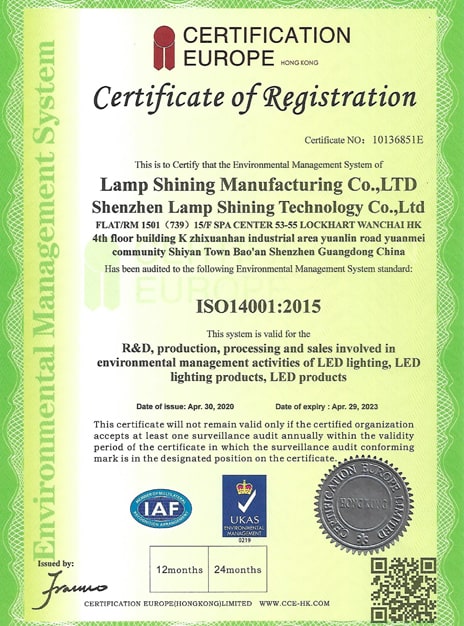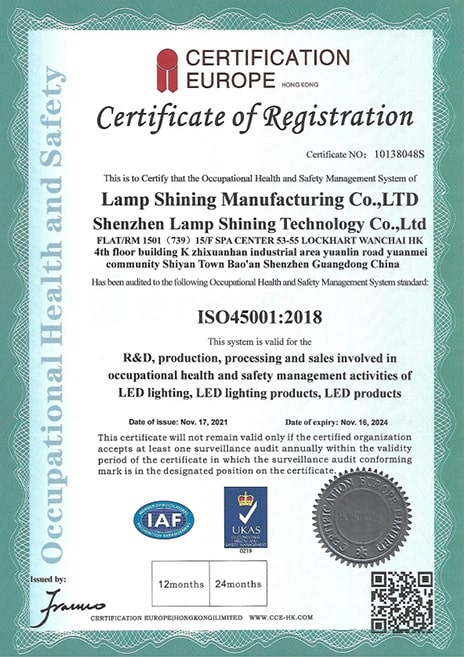
Wold Class Quality and Consistency
Independence LED is committed to continual improvement. We Research, Engineer, Test, Certify, Deploy, and then …Repeat. Many LED manufacturers are in a race to the bottom when it comes to price, while we are in a race to the top when it comes to quality.
Our Independence LED approach is simple: No Shortcuts. Our line of high efficiency tubes continues to set the standard and our goal is unwavering as we continue to develop,
“The Best LED Lighting.”
The ISO 9000 family addresses various aspects of quality management and contains some of ISO’s best known standards. The standards provide guidance and tools for companies and organizations who want to ensure that their products and services consistently meet customer’s requirements, and that quality is consistently improved.
There are many standards in the ISO 9000 family, including:
ISO 9001:2008 - sets out the requirements of a quality management system
ISO 9000:2005 - covers the basic concepts and language
ISO 9004:2009 - focuses on how to make a quality management system more efficient and effective
ISO 19011:2011 - sets out guidance on internal and external audits of quality management systems.
ISO 9001:2015 Quality Management System (QMS) is internationally recognised as the world’s leading quality management standard and has been implemented by over one million organisations in over 170 countries globally. ISO 9001 implemented, to its full potential, becomes an invaluable asset to your organisation.
The standard is based on a number of quality management principles including a strong customer focus, the motivation and implication of top management, the process approach and continual improvement. These principles are explained in more detail in the pdf Quality Management Principles. Using ISO 9001:2008 helps ensure that customers get consistent, good quality products and services, which in turn brings many business benefits.
Principle 1 – Customer focus
Principle 2 – Leadership
Principle 3 – Involvement of people
Principle 4 – Process approach
Principle 5 – System approach to management
Principle 6 – Continual improvement
Principle 7 – Factual approach to decision making
Principle 8 – Mutually beneficial supplier
More on ISO
More on the Independence LED lamps
ISO 14001:2015 specifies the requirements for an environmental management system that an organization can use to enhance its environmental performance. ISO 14001:2015 is intended for use by an organization seeking to manage its environmental responsibilities in a systematic manner that contributes to the environmental pillar of sustainability.
ISO 14001:2015 helps an organization achieve the intended outcomes of its environmental management system, which provide value for the environment, the organization itself and interested parties. Consistent with the organization's environmental policy, the intended outcomes of an environmental management system include:
- enhancement of environmental performance;
- fulfilment of compliance obligations;
- achievement of environmental objectives;
ISO 14001:2015 is applicable to any organization, regardless of size, type and nature, and applies to the environmental aspects of its activities, products and services that the organization determines it can either control or influence considering a life cycle perspective. ISO 14001:2015 does not state specific environmental performance criteria.
ISO 14001:2015 can be used in whole or in part to systematically improve environmental management. Claims of conformity to ISO 14001:2015, however, are not acceptable unless all its requirements are incorporated into an organization's environmental management system and fulfilled without exclusion.

IS0 45001:2018
ISO 45001:2018 specifies requirements for an occupational health and safety (OH&S) management system, and gives guidance for its use, to enable organizations to provide safe and healthy workplaces by preventing work-related injury and ill health, as well as by proactively improving its OH&S performance.
ISO 45001:2018 is applicable to any organization that wishes to establish, implement and maintain an OH&S management system to improve occupational health and safety, eliminate hazards and minimize OH&S risks (including system deficiencies), take advantage of OH&S opportunities, and address OH&S management system nonconformities associated with its activities.
ISO 45001:2018 helps an organization to achieve the intended outcomes of its OH&S management system. Consistent with the organization's OH&S policy, the intended outcomes of an OH&S management system include:
a) continual improvement of OH&S performance;
b) fulfilment of legal requirements and other requirements;
c) achievement of OH&S objectives.
ISO 45001:2018 is applicable to any organization regardless of its size, type and activities. It is applicable to the OH&S risks under the organization's control, taking into account factors such as the context in which the organization operates and the needs and expectations of its workers and other interested parties.
ISO 45001:2018 does not state specific criteria for OH&S performance, nor is it prescriptive about the design of an OH&S management system.
ISO 45001:2018 enables an organization, through its OH&S management system, to integrate other aspects of health and safety, such as worker wellness/wellbeing.
ISO 45001:2018 does not address issues such as product safety, property damage or environmental impacts, beyond the risks to workers and other relevant interested parties.
ISO 45001:2018 can be used in whole or in part to systematically improve occupational health and safety management. However, claims of conformity to this document are not acceptable unless all its requirements are incorporated into an organization's OH&S management system and fulfilled without exclusion.

Contact Us
Copyright © Lamp Shining Manufacturing Co., Ltd. All Rights Reserved